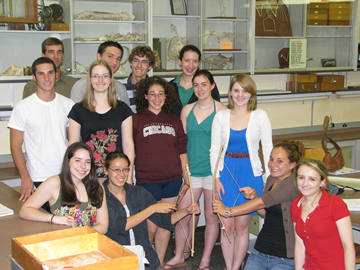 |
New Jersey Governor's School in the Sciences at Drew University |
 |
NJGSS Links |
|
| Team Projects | |
| NJGSS Home | |
| About NJGSS | |
Related Links |
|
| Drew University | |
2009 Team 6 |
||||||||
MAKING RED GOLD: AN EVALUATION OF ANCIENT SHELL BEAD PERFORATION TECHNIQUES Alison Barton, Andrew Bogdan, Elizabeth Day, Emily Fee, Samantha Giugliano, Phillip Holzsager, Sandra Korn, Joseph Massaglia, Laura Polding, Laura Poole, Colleen Reynolds Advisor: Dr. Ben Carter |
||||||||
ABSTRACT The Manteño Indians of South America greatly valued small beads made from Spondylus shell—the beads have even been called “red gold” in reference to the shell's coloring. Before 1200 AD, the Manteño and their predecessors produced shell beads using a procedure that included perforation by lithic (chert) microdrills; however, evidence for microdrills after 1200 AD is sparse. Additionally, bead characteristics changed in this era, suggesting a modification in methods of shell bead manufacture. Using a bow drill along with combinations of primary materials (chert, oak, teak, copper, and shell), and auxiliary materials (water, sand, and ground pumice stone) we tested possible perforation techniques. We were thus able to determine combinations of materials the Manteño might have employed to perforate Spondylus shell. |
||||||||
|
||||||||
